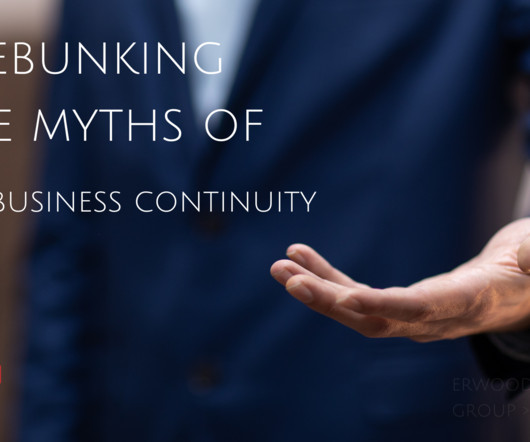BCM Basics: the Difference Between Business Continuity and Disaster Recovery
MHA Consulting
OCTOBER 5, 2023
This post is part of BCM Basics, a series of occasional, entry-level blogs on some of the key concepts in business continuity management. They soon find the field contains an abundance of specialist terms such as inherent risk , mitigation controls , and recovery time objective.
















Let's personalize your content